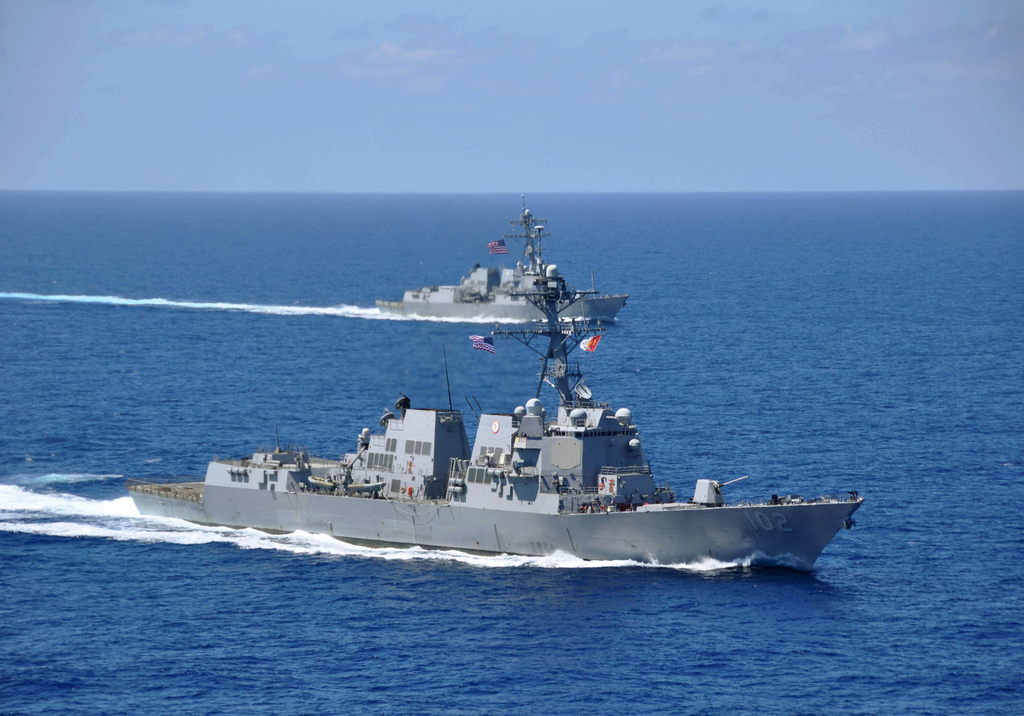
Resources in the South China Sea
The South China Sea has long been considered a flashpoint for regional tensions in East and Southeast Asia. Tensions are so high the maritime territory is “at risk of becoming Asia’s Palestine” according to Surin Pitsuwan, the outgoing Secretary-General of the ten-member Association of Southeast Asian Nations (ASEAN). China has caused fresh international controversy by authorizing a revised map in its new passports that shows disputed territories to be under Chinese sovereignty. More recently, on December 4, 2012, Vietnam accused a Chinese fishing boat of cutting a seismic cable attached to a Vietnamese vessel exploring for oil and gas near the Gulf of Tonkin, an act seemingly designed to prevent Hanoi from pursuing energy deposits.
While a range of academics, policy-experts, NGO’s, and government agencies from around the world have offered an enormous amount of commentary on this issue, most have focused on the territorial and political disputes in the region without fully discussing what the conflict truly centers on: a concentration of energy resources. Below is an energy profile for each resource located in the South China Sea.
Resources in SCS:
Hydrocarbons
| Region of South China Sea | Potential Oil and Gas Reserves |
| Southern China | 1500 million barrels |
| South of Hainan Island | 210 million barrels |
| Gulf of Tonkin | 95 million barrels |
| South Vietnam | 2847 million barrels |
| Sunda Shelf | 180 million barrels |
| Borneo/Sarawak | 9260 million barrels |
| Philippines | 409 million barrels |
Source: Swire Institute of Marine Science and Department of Ecology and Biodiversity, University of Hong Kong: ftp://ftp.fisheries.ubc.ca/l.teh/destructive%20fishing/South%20china%20sea.pdf
Oil
Though total estimates vary, the region is thought to contain oil reserves of at least 7.7 billion proven barrels, with more optimistic estimates reaching as high as 213 billion barrels. This is a huge sum, and if true, would be the equivalent of about 80 percent of the oil reserves of Saudi Arabia. The varied estimates demonstrate that no consensus has been formed on the numbers. Though Beijing has suggested the Spratly and Paracel Islands may also contain oil reserves, no reliable estimates have been on these areas either. However, many believe there to be a significant hydrocarbon prize in the region.
Natural Gas
Natural gas might be the most abundant and sought-after hydrocarbon resource in the South China Sea. Natural gas reserves are estimated to total around 266 trillion cubic feet and make up about 60-70 percent of the region’s hydrocarbon resources. Indeed, most of the hydrocarbon fields explored in the exclusive economic zones of Brunei, Indonesia, Malaysia, Thailand, Vietnam, and the Philippines contain natural gas, not oil.
As with oil, estimates of the region’s natural gas resources vary widely. One Chinese estimate for the entire SCS estimates natural gas reserves to be 2 quadrillion cubic feet, with the hope that Beijing can produce 15 billion cubic meters of LNG a year. Yet another Chinese report estimates 225 billion barrels of oil equivalent in the Spratly Islands alone. It is hypothetically possible therefore, that total gas resources (as opposed to proved reserves) in the South China Sea would be almost 900 trillion cubic feet (Tcf). This would be equivalent to the amount of natural gas in Qatar, which sits on the world’s third largest reserves.
Metals
Rare Earth Metals
As defined by the International Union of Pure and Applied Chemistry, rare earth metals are a set of seventeen chemical elements in the periodic table, specifically the fifteen lanthanides plus scandium and yttrium. The metals are important because they provide critical components in next generation technology; everything from hybrid cars to flat screen TVs to top-of-the-line smart phones have rare earth metal elements. Though the availability of REM’s in the South China Sea is still being determined, large deposits have recently been found just off Japan’s east coast, and China has previously used its virtual monopoly on the minerals to punish Japan in the Senkaku/Diaoyu island conflict.
Food Materials
Fish
According to studies made by the Filipino Department of Environment and Natural Resources, the South China Sea holds one third of the entire world’s marine biodiversity and provides about ten percent of the world’s catch. Major marine species include hairtail, chub mackerel, black scraper, anchovy, shrimps, crabs and smaller fishes. According to some estimates however, 40% of the stocks are collapsed or overexploited and 70% of the coral reefs are heavily depleted. Overfishing and destructive practices such as dynamite and cyanide fishing primarily contribute to this depletion.
In spite of the focus on hydrocarbon reserves, some scholars suggest that disputes over fishing rights have emerged as a larger driver of conflict. Indeed, depleting supplies have led to clashes in the past, and annual Chinese fishing bans under the auspices of environmental protection are seen as simply another way of claiming sovereignty. The South China Sea is filled with fishing vessels; China alone sent 23,000 fishing boats in August of this year after the annual ban was lifted.
For an ASP Fact Sheet on the South China Sea, click here.






[…] Resources in the South China Sea […]